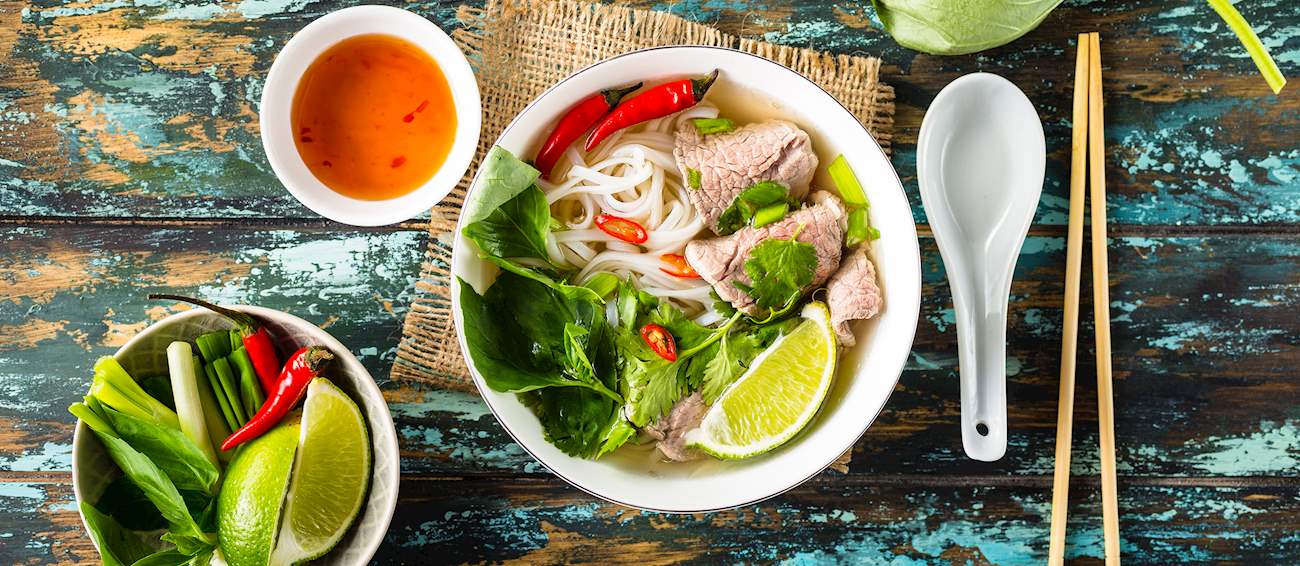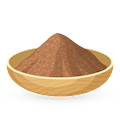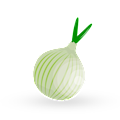This beef-based version of pho is prepared with assorted cuts and parts of beef – the stock is made from beef bones, shank, ox tail, and neck, while the toppings include thinly sliced fatty brisket (gầu), flank, eye-round steak, tripe, cooked and raw beef (tái nạm), tendon (gân), or beef balls (phở bò viên), but the latter version is not that popular in Vietnam.
Beef pho is usually flavored with dried spices such as cinnamon, star anise, cloves, cardamom, and coriander. The dish is served piping hot in a bowl along with rice noodles, and it's typically topped with cilantro, sliced onions, and chopped green onions.
VARIATIONS OF Phở bò
Pho is a Vietnamese noodle soup, Vietnam's national dish, street food, comfort food, and a way of life. It is also one of the most beloved Vietnamese dishes in the western hemisphere due to its complex, unique flavors, and elegant simplicity. Although it is classified as a soup, pho is served as the main course and the two bowls of it never taste the same.
It is traditionally made with chicken or beef broth, where the bones simmer lazily for at least three hours until the broth is perfect. The addition of herbs and spices accentuates the flavors, and the chewy rice noodles, juicy beef slices, and crunchy sprouts elevate the dish to another level.
VARIATIONS OF Pho
MOST ICONIC Pho
View moreMAIN INGREDIENTS
Bún bò Huế is a staple Vietnamese soup that is traditionally consumed for breakfast, consisting of pork and beef bones broth, bun noodles, lemongrass, shrimp paste, lime juice, and a variety of herbs. The soup is much spicier than most Vietnamese soups, and its flavor is often described as rich and complex.
It originated in the city of Hue, but not much is known about its exact origins or inventor. Usual additions include sliced brisket or crab balls, but every cook makes the dish with slight variations. Many believe that bún bò Huế found its way into mainstream society by way of royal order, and it was influenced by the imperial court's cuisine.
MOST ICONIC Bún bò Huế
View moreMAIN INGREDIENTS
The term canh chua cá encompasses various fish-based Vietnamese soups that are characterized by their combination of sweet, spicy, and sour flavors. The soups are usually made with a tamarind-based broth, and they typically include chunks of pineapple, tomatoes, okra, bean sprouts, or other vegetables.
Most varieties are prepared with catfish, but some versions include carp, snakehead fish, eels, or salmon. These soups are usually topped with cilantro and served with rice on the side.
Phở bò tái chín is a Northern Vietnamese version of phở bò (beef pho). This soup is prepared with well-done (chín) and rare or half-done beef (tái) that's cooked by the broth when served.
Other common components of the soup include beef broth, bones, ginger, onions, fish sauce, sugar, anise, cloves, cinnamon, and rice noodles. A few slices of roast beef and raw beef are served in each bowl before the broth is ladled into the bowls.
Phở bò tái chín is usually garnished with Thai chili peppers, bean sprouts, cilantro, and Asian basil, while lime wedges are often served on the side.
MAIN INGREDIENTS
Phở gà is a traditional pho variety made with chicken. It can usually be ordered as bình thường (normal) with white breast meat, dark meat, fat, and skin, or gà nạc (lean chicken) with sliced breast meat. The broth in phở gà is much lighter and clearer than the one found in phở bò (beef pho).
Other ingredients used in the preparation of chicken pho often include ginger, fish sauce, rice noodles, shallots, green onions, and cilantro. Garnishes include lime wedges, mint, sliced chili peppers, bean sprouts, and Thai basil sprigs. It is believed that this pho variety was invented in the 1930s, when beef wasn't available in Vietnamese markets on Mondays and Fridays.
Phở hải sản is a traditional variety of pho. This type of pho is made with seafood as the basic element. The broth is made from chicken bones and seafood, which give it a slightly sweet flavor. The ingredients used for phở hải sản usually include shrimp, clams, and squid, onions, noodles, mushrooms, and coriander.
The broth is often flavored with spices such as cinnamon, star anise, cloves, and cardamom. Once prepared, the soup is ladled into a deep bowl while still piping hot, and it's then garnished with anything from lime wedges and sliced green onions to bean sprouts and sliced chili peppers.
MAIN INGREDIENTS
Bún riêu is a crab-based Vietnamese noodle soup. The dish is made in several versions, but the most popular one is made with a tomato base and goes under the name bún riêu cua. The soups are prepared with different broths, but they are always infused with crab paste and come served with vermicelli noodles, while the toppings typically include crab meat, pork, tofu, tomatoes, blood jelly, and a selection of fresh greens such as perilla or bean sprouts.
The combination of sweet and sour flavors make bún riêu one of the favorite noodle dishes in the country.
MOST ICONIC Bún riêu
View moreThis colorful noodle soup is a local specialty hailing from Hai Phong. It consists of pork-based broth that is topped with a variety of ingredients such as crab meat, fresh herbs, pork balls, chả lụa sausage, or ground meat wrapped with betel leaves (bò lá lốt).
The ingredients may vary, but each bowl needs to have a serving of locally made noodles (bánh đa) that are characterized by their light red hue. Lime wedges, lettuce, perilla leaves, or sliced chili peppers are usually served on the side.
Hủ tiếu Nam Vang is a popular Vietnamese street food with Cambodian-Chinese roots. The dish is named after the Cambodian capital Phnom Penh (Nam Vang), and the recipe is tweaked to adapt to Vietnamese flavors. The noodle soup should have a clear and rich broth made from pork bones, pork, and dried squid and shrimp.
The noodles can be transparent rice noodles, chewy tapioca noodles, or thin Chinese egg noodles. Toppings include a combination of sliced pork liver, cooked pork meat, sautéed ground pork, quail eggs, fried shallots, garlic, and poached shrimp.



TasteAtlas food rankings are based on the ratings of the TasteAtlas audience, with a series of mechanisms that recognize real users and that ignore bot, nationalist or local patriotic ratings, and give additional value to the ratings of users that the system recognizes as knowledgeable. For the “Top 38 Vietnamese Soups” list until April 15, 2025, 1,932 ratings were recorded, of which 1,364 were recognized by the system as legitimate. TasteAtlas Rankings should not be seen as the final global conclusion about food. Their purpose is to promote excellent local foods, instill pride in traditional dishes, and arouse curiosity about dishes you haven’t tried.






























